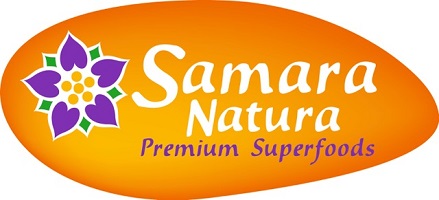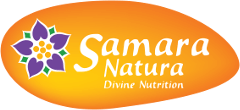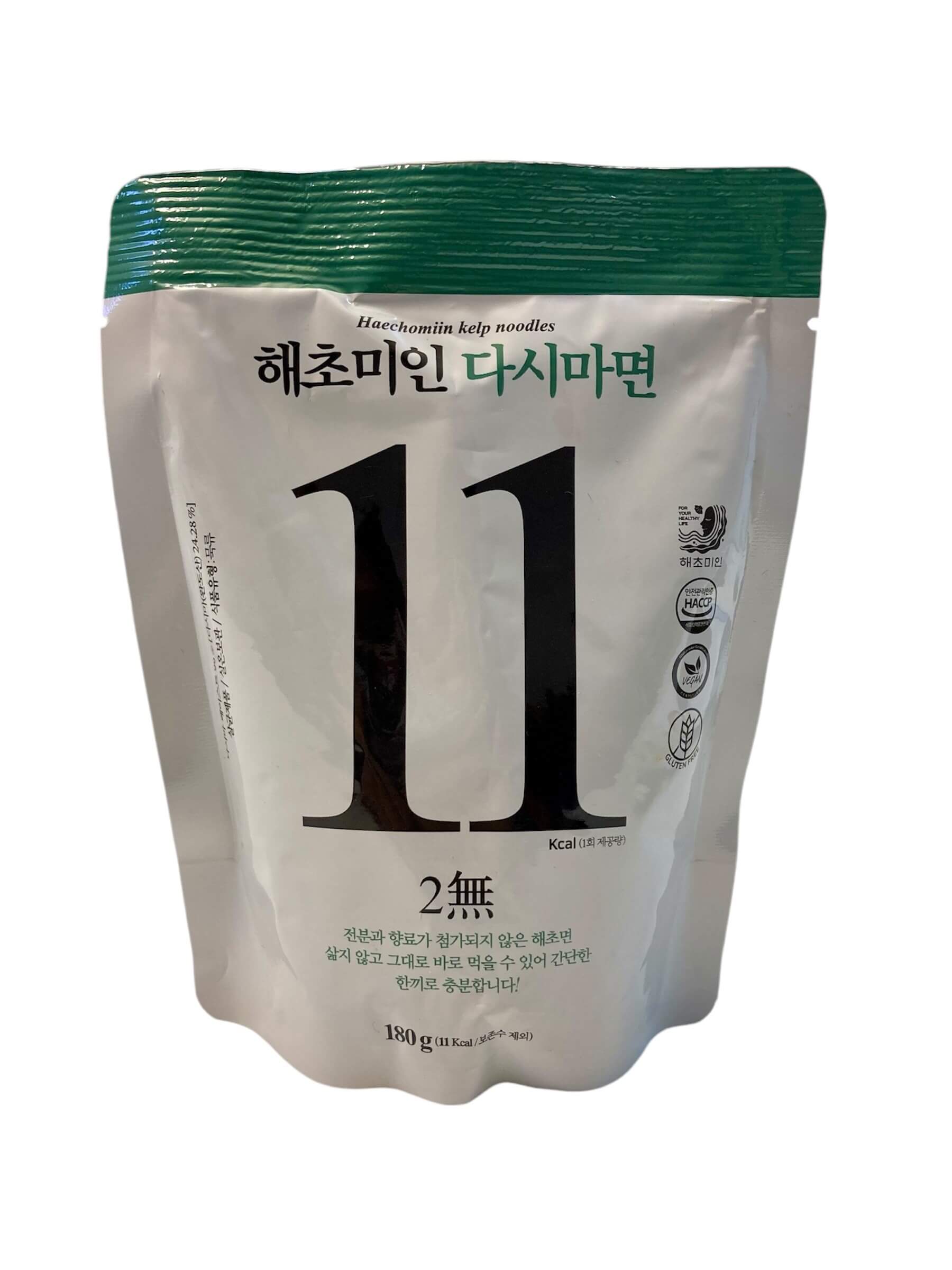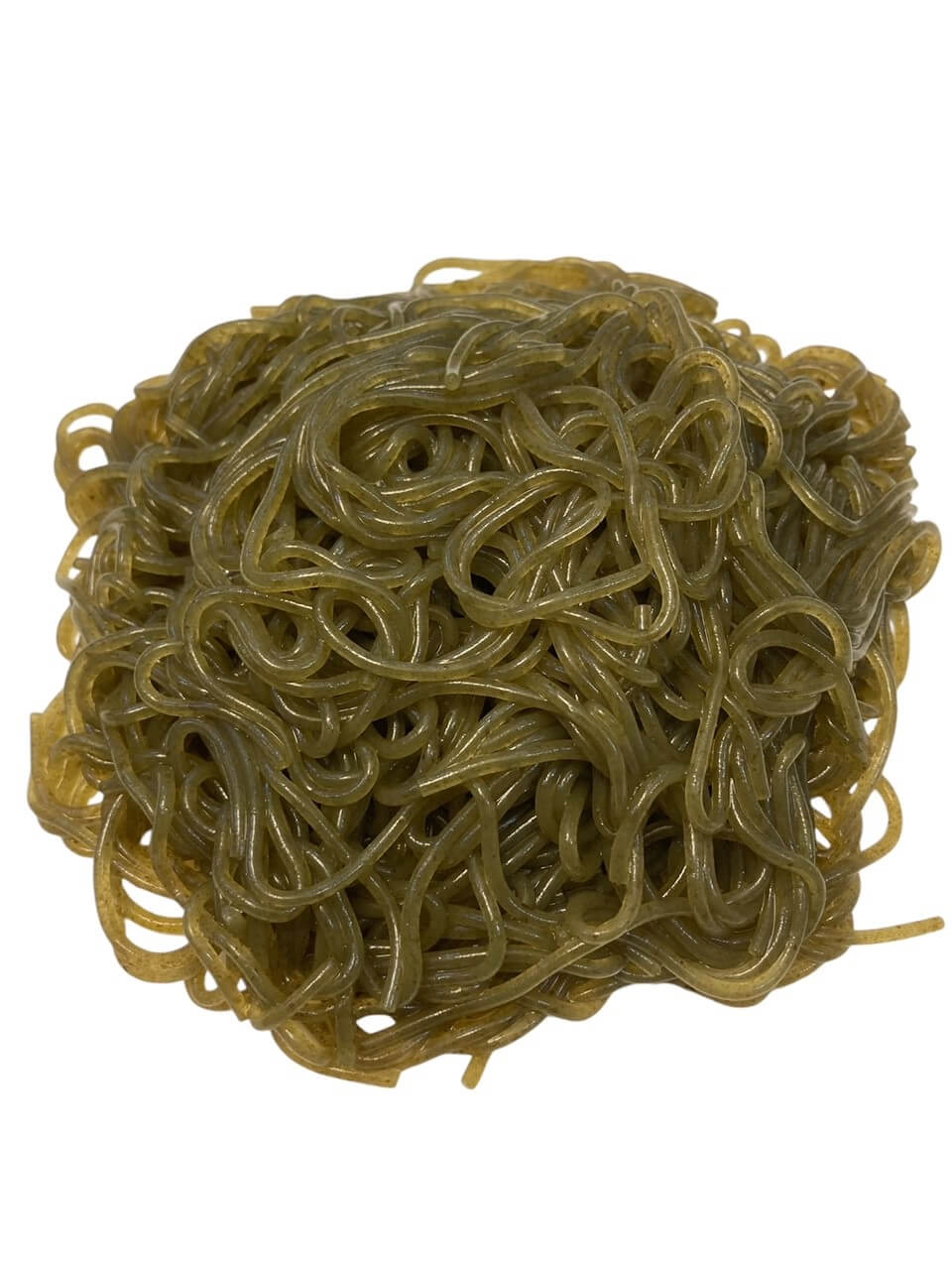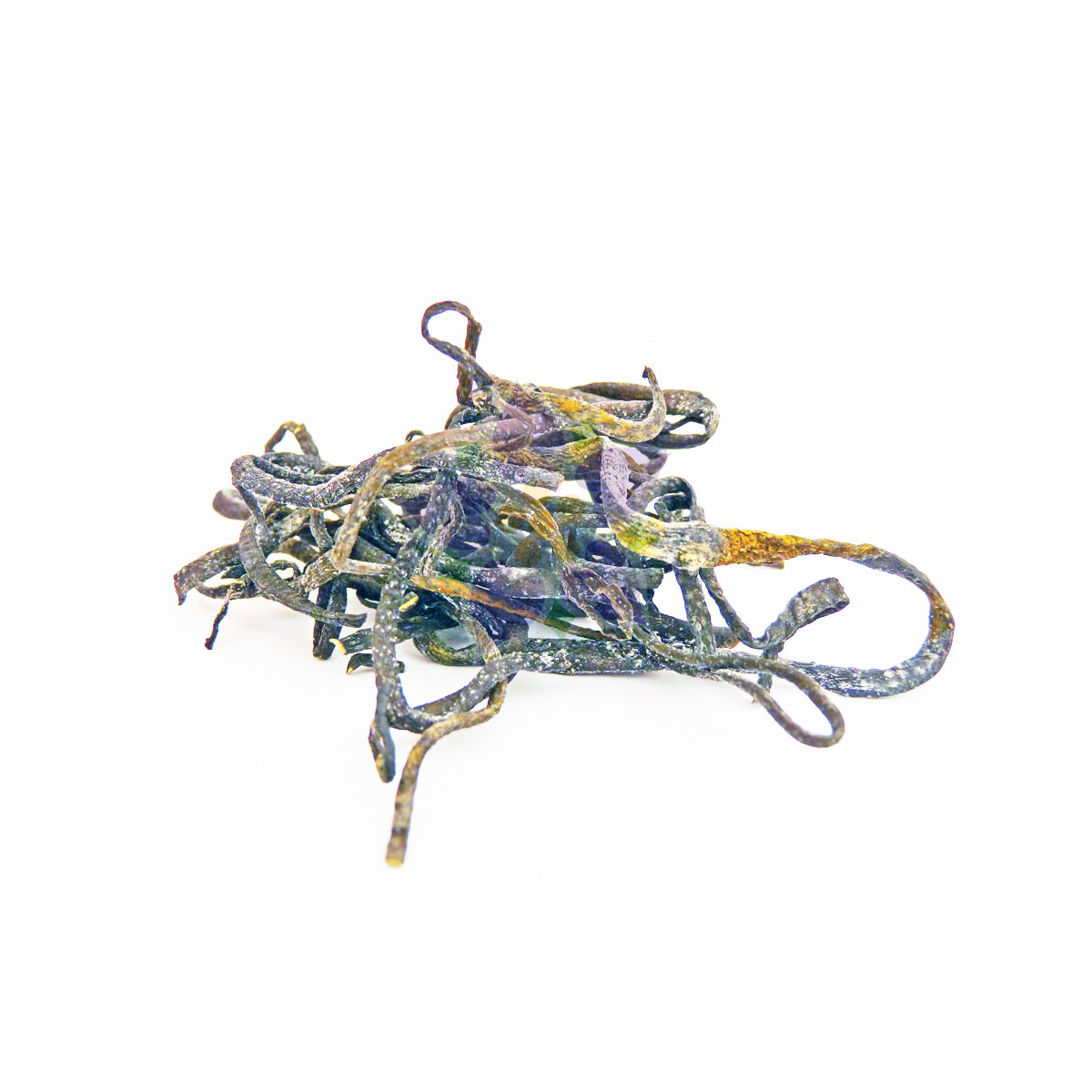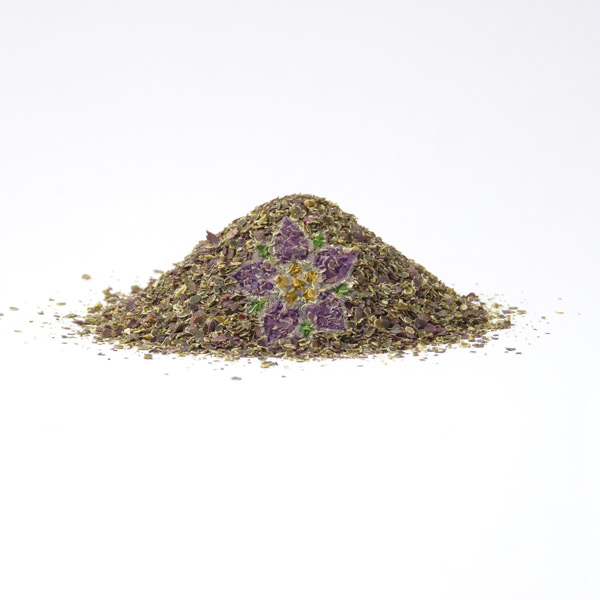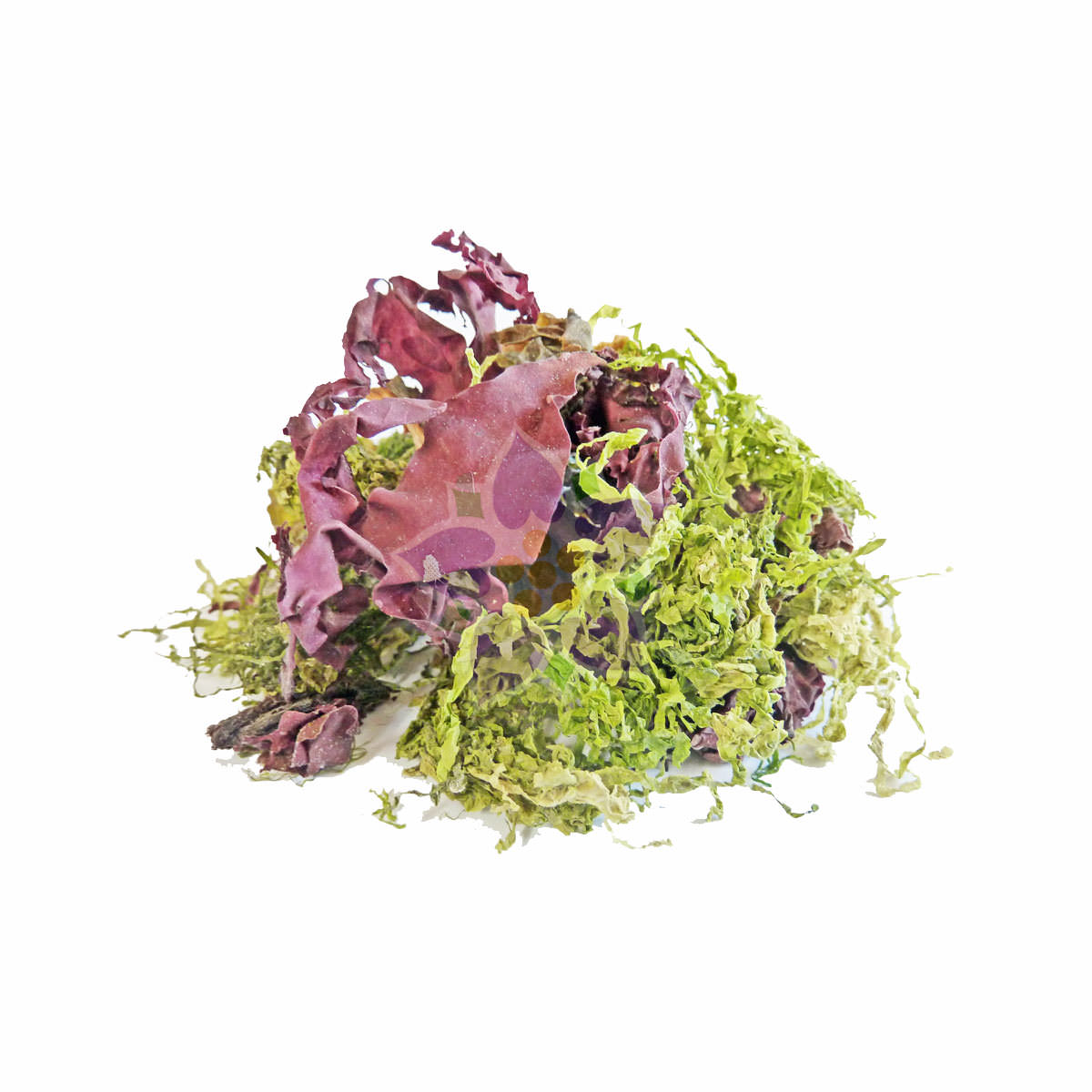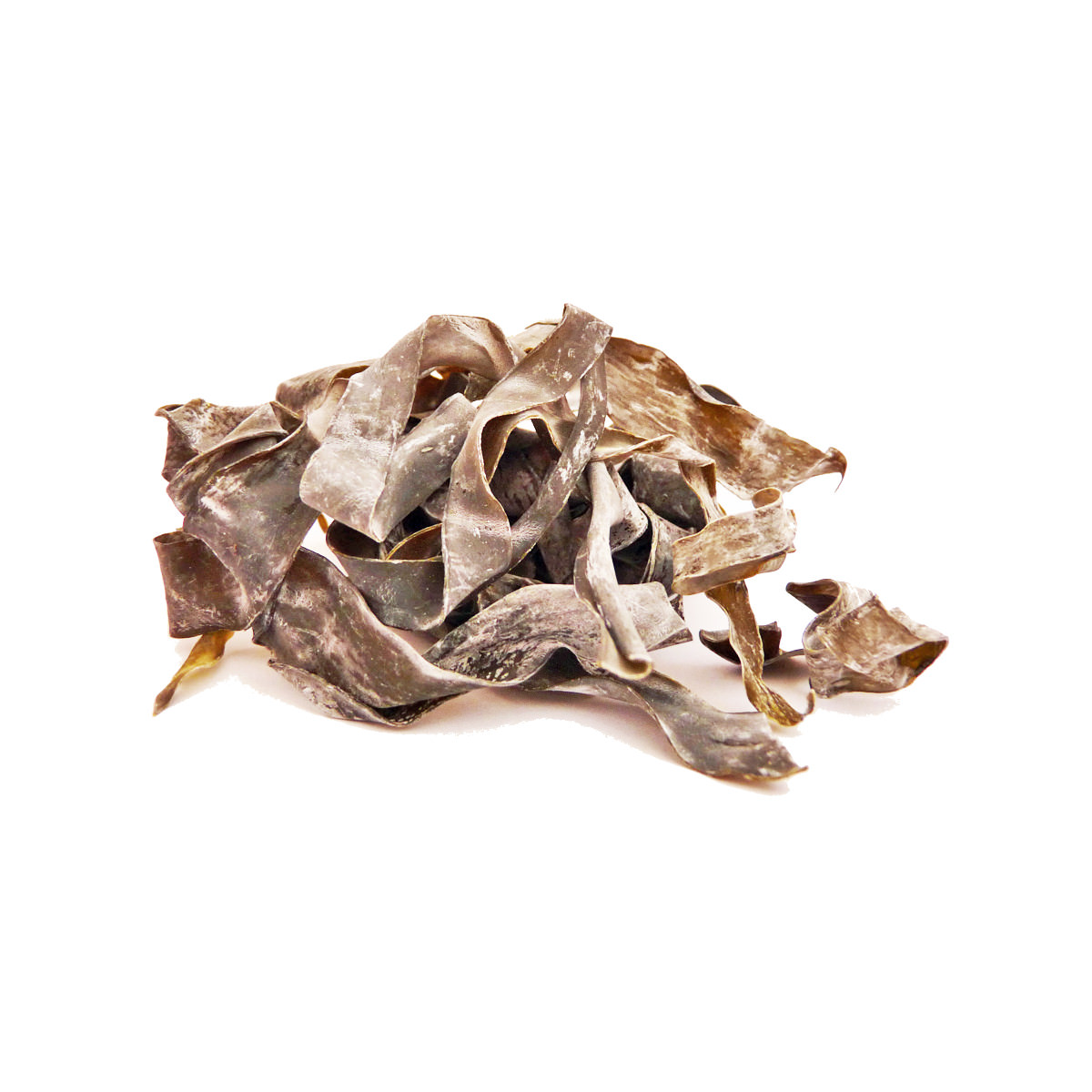| Quantity | Unit price | Base price |
|---|---|---|
| To 2 |
CHF 6.00*
|
CHF 3.33* / 100 Gramm |
| From 3 |
CHF 5.70*
|
CHF 3.17* / 100 Gramm |
Available again soon, see product description for details
Product information "Kelp Noodles"
Kelp noodles - low-calorie pasta alternative
Update: We have found a new kelp noodle producer inHaechomiin from South Korea. The kelp noodles have a green colour and are relatively soft. They have a similar flavour to nori leaves, but are less intense and less salty. They are pasteurised and ready to eat. Each bag contains 180g.
Kelp noodles are a sea vegetable in the form of ready-to-eat seaweed noodles. They are fat-free, gluten-free, starch-free and low in carbohydrates and calories. Thanks to their noodle shape and neutral flavour, you can easily turn them into a delicious main course with your favourite sauce.
At the same time, the noodles contain many trace elements, such as iodine, for which kelp is known. Kelp noodles are a mineral-rich and tasty alternative to pasta and rice noodles. And the best thing is that kelp noodles don't need to be cooked, you simply rinse them briefly with water and can add them to any dish - quick and easy!
What are the advantages of kelp noodles?
Kelp noodles are soft, taste only subtly of seaweed and are so neutral in flavour that, together with a sauce, they are the ideal substitute for normal pasta. Vegan and gluten-free, they have all the health benefits that sea vegetables have to offer.
There is no need to prepare, heat or soak them and they can be stored in a sealed bag at room temperature for up to six months.
A 100g portion of kelp noodles contains only 11 calories (kcal), a whole pack (180g) only 20 calories. This cannot be compared with other pasta products. Have for comparison:
- Asian rice noodles cooked approx. 109 kcal / 100g
- Spaghetti made from durum wheat semolina cooked approx. 157 kcal / 100g
SamaraNatura kelp noodles
The new manufacturer of this product is Haechomiin. In contrast to the previous version, these kelp noodles are green (no longer white) because the producer also processes the green outer layer or skin of the seaweed.
The dried kelp is ground into powder, mixed with water and sodium alginate and then processed into noodles.
One bag contains 180 grams of kelp noodles.
Preparation of kelp noodles
The kelp noodles are ready to eat in just a few seconds. Simply remove from the packaging, rinse briefly under running water in a colander, drain well and mix in a bowl with a sauce of your choice.
Kelp noodles go well with stir-fries, hot broths and casseroles. They are also popular in salads, cold soups and with guacamole. A simple dressing with sesame or olive oil, soya sauce, pesto or tomato sauce is all you need for a quick meal.
Delicious kelp noodles recipe (still based on the previous light-coloured kelp noodles)
This recipe comes from the Rohkosthüsli in Bülach. Ingredients for 2 large or 4 small portions:
- 1 pack of kelp noodles, rinsed
- 1/2 of a small red cabbage, thinly sliced
- 2 carrots, thinly sliced
- 1 green chilli pepper, thin strips
- 1 yellow chilli pepper, thin strips
- 1/2 medium Chinese cabbage, 5mm thick strips
- 2 handfuls mung bean sprouts
- 1 chilli pepper, finely chopped
Put everything in a bowl.
For the sauce:
- 3 tbsp white almond butter
- 3 tbsp lime juice
- 1 tsp date paste
- 2 tbsp tamari soy sauce
- 1 tbsp sesame oil
- fresh ginger, finely chopped, if required
Stir all the ingredients together well and mix with the remaining ingredients in the bowl. "En Guete!"
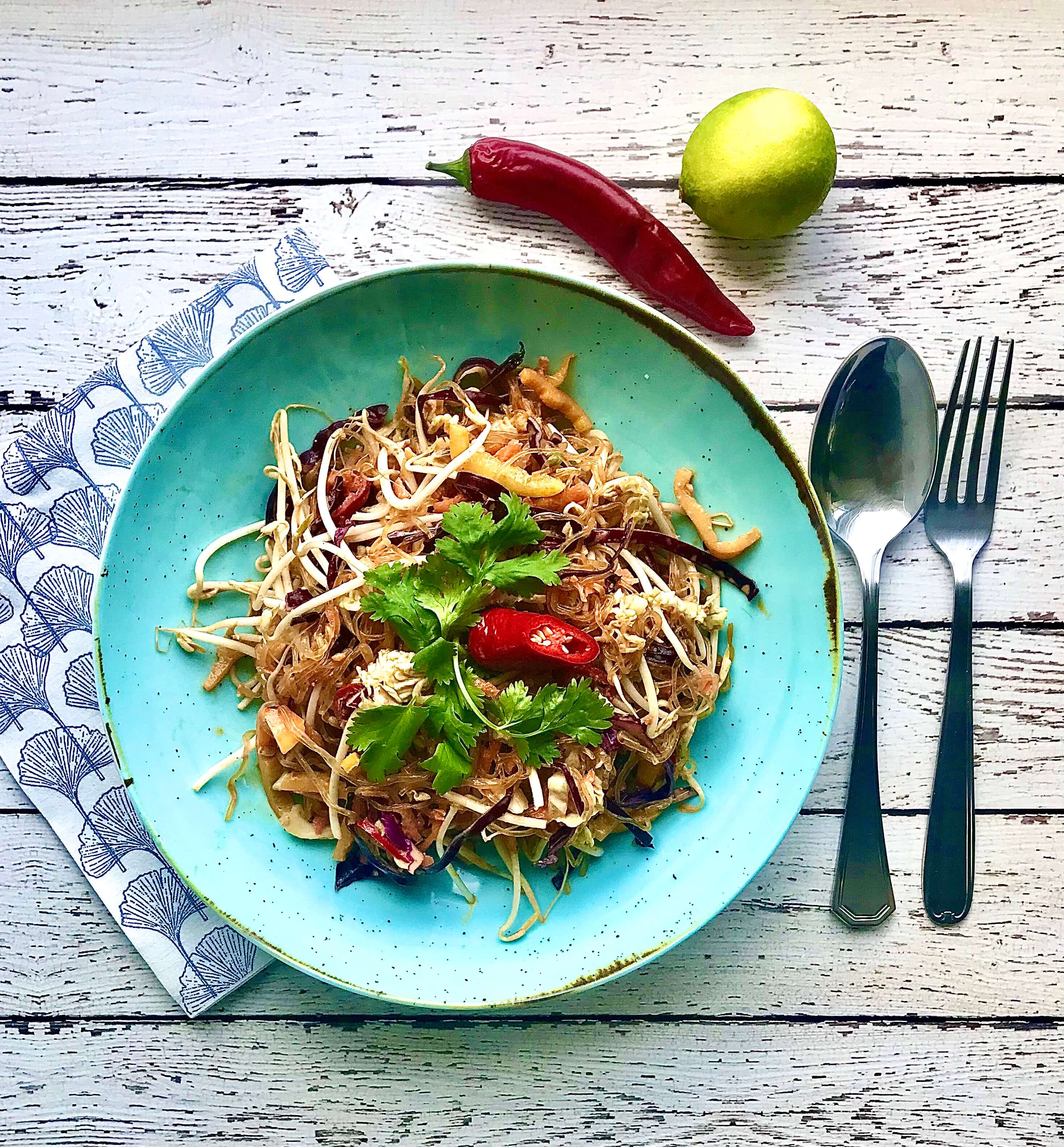
Ingredients
Seaweed paste 98.5%, seaweed 24.28%, purified water, sodium alginate, dibasic potassium phosphate, agar, alginic acid sodium.
Minimum shelf life
We order a new batch every few months. The best-before date is usually 6 to 8 months.
Histamine
Kelp noodles are not suitable for people with histamine intolerance.
Storage
Store in a cool, dry place at room temperature and consume as soon as possible after opening.Avoid direct sunlight. Do not freeze, as this can deform the kelp noodles.
Nutritional values of kelp noodles per 100g
Energy value 11kcal / 46kJ
Fat 0.3g
of which saturated fatty acids 0.0g
Carbohydrates 1.6g
of which sugar 0.0g
Dietary fibre 0.0g
Protein 0.5g
Salt <0.1g
Manufacturer and reference
Haecheongjeong Co Ltd, 55, Neuggongdanji 1-gil, Wando-eup, Wando-gun, Jeollanam-do. Kelp noodles are produced in the same production facility as eggs, milk, beef, squid, shellfish (including oysters, abalone, mussels) and pine nuts. Despite professional cleaning, the slightest residue (traces) cannot be 100% ruled out.
Login
4 reviews
29 May 2022 10:57
Super- feiner Nudelersatz. Ich liebe Kelp- Noodels und meine Familie auch.
Sehr guter Nudel- Ersatz mit wenig Kalorien. Gerade bei einer längeren Diät, hat man auch einmal Lust auf Nudeln. Und so bin ich auf diesen Nudel- Ersatz gekommen. Schmecken neutral und kann man wirklich mit jeder Sauce kombinieren. Werden wir ganz sicher wieder kaufen.
27 April 2021 13:23
High quality product, excellent raw and vegan choices
Love these noodles, high quality product, mineral rich and really great choice for raw vegans!
23 December 2020 19:08
Köstlicher Nudelersatz
schon seit Jahren geniessen wir diese köstlichen Nudeln pur oder mit Sauce je nach Geschmack.
2 July 2015 10:26
super good & fast sending
i am enchanted with your kelp noodles!! they are super good, funny to eat, you sent them with a lot of rapidity, i am just super gratefull, Mille mercis fleuris :)
